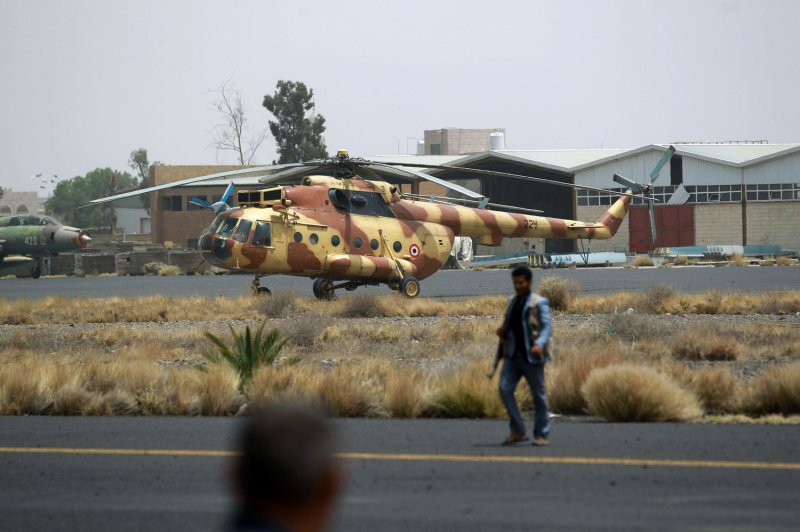A rise in global arms sales in the last five years was driven partly by conflict in Yemen. Pictured, an armed member of Shiite Houthi militia walks on the tarmac of the Sanaa International Airport in Sanaa, on March 28, 2015 after the third day of Saudi-led coalition airstrikes against Houthis. At least 200 U.N. staff and other expatriates were evacuated from the Yemeni capital as an Arab coalition pressed a bombing campaign against Shiite rebels in the city, aid workers said. File photo by Mohammad Abdullah/UPI |
License Photo
STOCKHOLM, Sweden, Feb. 22 (UPI) -- The volume of international transfers of major weapons increased 14 percent between between 2006–2010 and 2011–2015, with the Middle East and the Asia-Pacific regions accounting for much of it.
According to a report from the Stockholm International Peace Research Institute, six of the top 10 largest arms importers from 2011 to 2015 were in Asia and Oceania: India, 14 percent of global arms imports; China, 4.7 percent; Australia, 3.6 percent; Pakistan, 3. 3 percent; Vietnam, 2.9 percent; and South Korea, 2.6 percent.
Vietnam, in a territorial dispute with China, increased its arms imports by 699 percent.
"China continues to expand its military capabilities with imported and domestically produced weapons," said Siemon Wezeman, senior researcher with the SIPRI Arms and Military Expenditure Program. "Neighboring states such as India, Vietnam and Japan are also significantly strengthening their military forces."
Arms imports by states in the Middle East rose by 61 percent between 2006–2010 and 2011–2015, the report said. In 2011–2015, Saudi Arabia was the world's second-largest arms importer, with an increase of 275 percent compared to 2006–2010. Arms imports in the same period rose 35 percent for the United Arab Emirates, 279 percent for Qatar, and 37 percent for Egypt.
"A coalition of Arab states is putting mainly US- and European-sourced advanced arms into use in Yemen," Wezeman said. "Despite low oil prices, large deliveries of arms to the Middle East are scheduled to continue as part of contracts signed in the past five years."
Yemen is a flashpoint in the Middle East, where Arab coalition forces are fighting Houthi rebels and Islamist terrorists.
The report by the Swedish think tank also said that among arms exporters the United States remained the biggest, with a 33 percent share of total arms exports. Russia accounted for 25 percent of global exports in the recent five-year period but returned to the lower annual levels observed in the prior period in 2014 and 2015.
Chinese exports of major arms were just above those of France in 2011–2015, growing by 88 percent compared to 2006–2010. French exports decreased by 9.8 percent and German exports halved over the same period.















